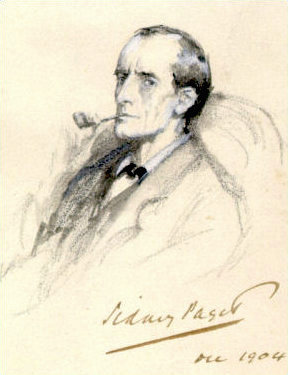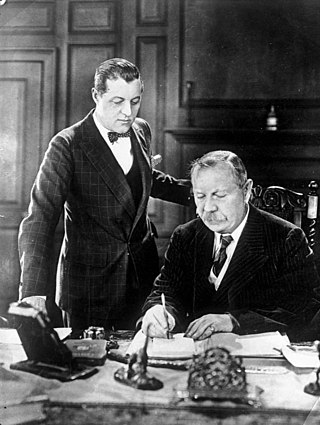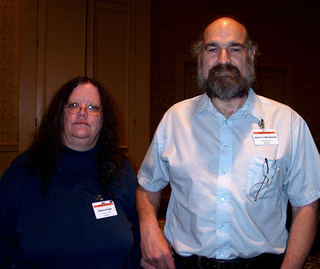Related Research Articles

Sherlock Holmes is a fictional detective created by British author Arthur Conan Doyle. Referring to himself as a "consulting detective" in his stories, Holmes is known for his proficiency with observation, deduction, forensic science and logical reasoning that borders on the fantastic, which he employs when investigating cases for a wide variety of clients, including Scotland Yard.

Professor James Moriarty is a fictional character and criminal mastermind created by Sir Arthur Conan Doyle to be a formidable enemy for the author's fictional detective Sherlock Holmes. He was created primarily as a device by which Doyle could kill Holmes and end the hero's stories. Professor Moriarty first appears in the short story "The Adventure of the Final Problem", first published in The Strand Magazine in December 1893. He also plays a role in the final Sherlock Holmes novel The Valley of Fear, but without a direct appearance. Holmes mentions Moriarty in five other stories: "The Adventure of the Empty House", "The Adventure of the Norwood Builder", "The Adventure of the Missing Three-Quarter", "The Adventure of the Illustrious Client", and "His Last Bow".
John Dickson Carr was an American author of detective stories, who also published using the pseudonyms Carter Dickson, Carr Dickson, and Roger Fairbairn.

Adrian Malcolm Conan Doyle was the youngest son of Sir Arthur Conan Doyle and his second wife Jean, Lady Doyle or Lady Conan Doyle. He had two siblings, sister Jean Conan Doyle and brother Denis, as well as two half-siblings, sister Mary and brother Kingsley.

John Shirley is an American writer, primarily of horror, fantasy, science fiction, dark street fiction, westerns, and songwriting. He has also written one historical novel, a western about Wyatt Earp, Wyatt in Wichita, and one non-fiction book, Gurdjieff: An Introduction to His Life and Ideas. Shirley has written novels, short stories, TV scripts and screenplays—including The Crow—and has published over 84 books including 10 short-story collections. As a musician, Shirley has fronted his own bands and written lyrics for Blue Öyster Cult and others. His newest novels are Stormland and Axle Bust Creek.

Roddy Doyle is an Irish novelist, dramatist and screenwriter. He is the author of eleven novels for adults, eight books for children, seven plays and screenplays, and dozens of short stories. Several of his books have been made into films, beginning with The Commitments in 1991. Doyle's work is set primarily in Ireland, especially working-class Dublin, and is notable for its heavy use of dialogue written in slang and Irish English dialect. Doyle was awarded the Booker Prize in 1993 for his novel Paddy Clarke Ha Ha Ha.
John Peel is a British writer, best known for his TV series tie-in novels and novelisations. He has written under several pseudonyms, including "John Vincent" and "Nicholas Adams". He lives on Long Island, New York. While his wife is a US citizen, Peel continues to travel under a British passport.

The Exploits of Sherlock Holmes is a short story collection of twelve Sherlock Holmes pastiches, first published in 1954. It was written by Adrian Conan Doyle, who was the son of Sir Arthur Conan Doyle, and by John Dickson Carr, who was the authorised biographer of the elder Conan Doyle. The first six stories were written in collaboration by the two writers, while the last six stories were written solely by Adrian Conan Doyle.
The Giant Rat of Sumatra is a fictional giant rat, first mentioned by Arthur Conan Doyle in "The Adventure of the Sussex Vampire". As part of the tale, the protagonist, Sherlock Holmes, declares that there is a "story" connected with this rat, presumably a detective case he has handled. The name of the rat and its implied unpublished history were later used in works by many other writers.
"Simpsons Bible Stories" is the eighteenth episode of the tenth season of the American animated television series The Simpsons. It first aired on the Fox network in the United States on Easter Sunday, April 4, 1999. It is the first of The Simpsons' now annual trilogy episodes, and consists of four self-contained segments. In the episode, the Simpson family falls asleep during a sermon in church. Marge dreams that she and Homer are Adam and Eve in the Garden of Eden, Lisa dreams that she and her fellow Springfield Elementary School students are Hebrew slaves in Ancient Egypt and guides Moses to lead them to freedom, Homer dreams that he is King Solomon called to resolve a dispute between Lenny and Carl over the ownership of a pie, and Bart dreams he is King David, who has to fight Goliath's son, Goliath II.

James John Patrick Murphy was an American author. He wrote more than 35 nonfiction and fiction books for children, young adults, and general audiences, including more than 30 about American history. He won the Margaret A. Edwards Award from the American Library Association in 2010 for his contribution in writing for teens.
"Demon with a Glass Hand" is an episode of the American television series The Outer Limits, the second to be based on a script by Harlan Ellison, which Ellison wrote specifically with actor Robert Culp in mind for the lead role. It originally aired on October 17, 1964, and was the fifth episode of the second season. In 2009, TV Guide ranked "Demon with a Glass Hand" #73 on its list of the 100 Greatest Episodes.

Up the Line (1969) is a time travel novel by American science fiction author Robert Silverberg. The plot revolves mainly around the paradoxes brought about by time travel and is considered an example of the more sexually-permissive era of late 1960s American science-fiction, a reflection of the counterculture of its day. It was nominated for a Nebula Award for Best Novel in 1969 and a Hugo Award for Best Novel in 1970 but lost to Ursula K. Le Guin's The Left Hand of Darkness both times.

James Douglas Ignatius Macdonald is an American author and critic who lives in New Hampshire. He frequently collaborated with his late wife Dr. Debra Doyle. He works in several genres, concentrating on fantasy, but also writing science fiction, and mystery and media tie-ins.
"A Study in Emerald" is a short story written by British fantasy and graphic novel author Neil Gaiman. The story is a Sherlock Holmes pastiche transferred to the Cthulhu Mythos universe of horror writer H. P. Lovecraft. Gaiman describes it as "Lovecraft/Holmes fan fiction". It won the 2004 Hugo Award for Best Short Story. The title is a reference to the Sherlock Holmes novel A Study in Scarlet.

Debra Doyle was an American author in multiple related fiction genres, including science fiction, fantasy, and mystery, for young adults and adults. Her works were co-written with her husband, James D. Macdonald.

Traditionally, the canon of Sherlock Holmes consists of the 56 short stories and four novels written by Sir Arthur Conan Doyle. In this context, the term "canon" is an attempt to distinguish between Doyle's original works and subsequent works by other authors using the same characters. Usually capitalized by aficionados of the Sherlockian game as "the Canon", the description of these 60 adventures as the Sherlock Holmes canon and the game of applying the methods of "Higher Criticism" to it was started by Ronald Knox as a playful use of the traditional definition of canon as an authoritative list of books accepted as holy scripture.

Sir Arthur Ignatius Conan Doyle was a British writer and physician. He created the character Sherlock Holmes in 1887 for A Study in Scarlet, the first of four novels and fifty-six short stories about Holmes and Dr. Watson. The Sherlock Holmes stories are milestones in the field of crime fiction.

The Narrative of John Smith (2011) is a novel written in 1883 by Arthur Conan Doyle, published posthumously by The British Library. In a work of narrative fiction, Doyle writes from the perspective of a middle-aged bachelor named John Smith recovering from rheumatic gout. Unlike his later work in detective fiction, fantasy, and science fiction, this novel unfolds through a series of tangential, essay-like thoughts stemming from observations on everyday life. The subjects are of a “personal-social-political complexion”.